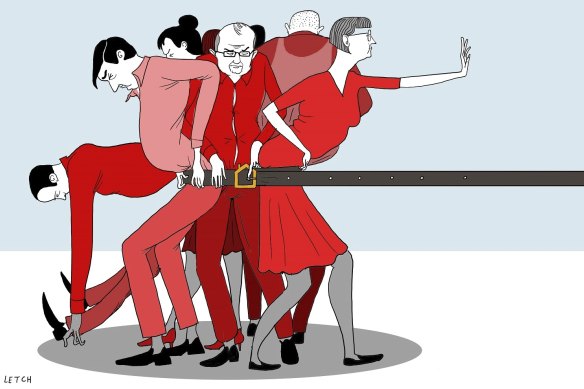Save articles for later
Add articles to your saved list and come back to them any time.
The number of borrowers falling behind on their mortgage payments remains lower than before the pandemic but is expected to rise as more people roll off their low fixed rates to much higher variable rates.
Figures from credit bureau Equifax show a 33 per cent rise in mortgage repayment arrears of between 30 and 89 days across all lenders, as a percentage of their loan books, between the June quarter of 2023 and the June quarter of 2022.
More borrowers are under mortgage stress with arrears rising, though most who seek assistance from their lender are getting back on their feet. Credit: Simon Letch
Despite the increase, the arrears remain below pre-pandemic levels, though the increase is a sign interest rate rises are taking effect on Australian homeowners, says Melanie Cochrane, Equifax CEO Australia and New Zealand.
It can take months for the full impact of rate rises to feed through to higher variable mortgage rates. Since May last year, the Reserve Bank of Australia has increased the cash rate 12 times, from 0.1 per cent to 4.1 per cent.
While the biggest growth in the March quarter this year was arrears under 30 days, the biggest increase in the June quarter was 30 to 89 days.
“We expect defaults of more than 90 days to increase in the coming quarters,” Cochrane says.
She says the most likely reason that total arrears remain below pre-pandemic levels is lenders became much more proactive during the depths of the pandemic in assisting customers in financial stress.
However, it could only be a matter of time before arrears rates rise to more than pre-pandemic levels, as more people roll-off their fixed rate mortgages, Cochrane says.
She points out that many mortgage holders are ahead on their repayments, with sizeable amounts of money held in mortgage offset accounts, providing a buffer to those under financial stress.
Financial assistance rates, where customers seek help from their lenders, are lower than they were during the worst of the pandemic, but are almost double what they were just before the onset of the pandemic in early 2020.
Almost 90 per cent of those with loans, which includes credit cards, auto loans and personal loans, as well as home loans, who required assistance have returned to normal repayments, or had some form of restructure of their mortgages or other loans, Cochrane says.
“Lenders are monitoring customers who may be experiencing financial stress,” Cochrane says.
Lenders have a number of ways they can ease financial stress. They can extend the term the loan to lower the minimum repayment, or defer repayments for a time, or offer interest reductions and waive fees and charges.
The Equifax figures on arrears and financial assistance come as Australian Bureau of Statistics figures show record numbers of people taking on multiple jobs as they battle higher costs of living.
Kris Grant, the chief executive of ASPL Group, a management consultancy and recruitment firm, says the figures are signs that many Australians are struggling to make ends meet with one job alone.
She says more people are working two or more jobs to cover the rising costs of living; with many forced to work more than one job to meet home loan repayments.
- Advice given in this article is general in nature and is not intended to influence readers’ decisions about investing or financial products. They should always seek their own professional advice that takes into account their own personal circumstances before making any financial decisions.
For expert tips on how to save, invest and make the most of your money, delivered to your inbox every Sunday, sign up for our Real Money newsletter here.
Most Viewed in Money
From our partners
Source: Read Full Article

